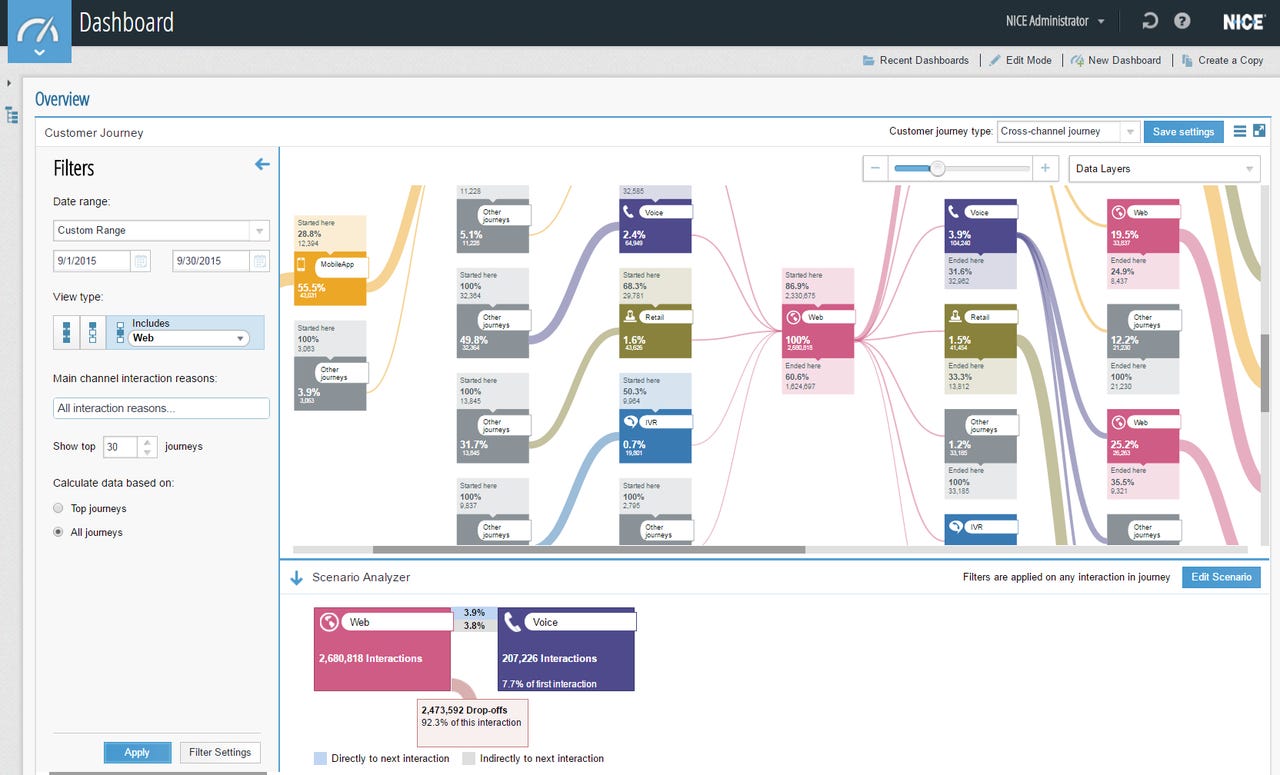Analyzing customer journeys can be NICE

The term customer journey may sound exotic to the non-initiated, but it is as widespread in the industry as it is simple. It refers to the stages that customers go through in interacting with a company, from buying products online to accessing customer services on the phone.
A defining feature of customer journeys is the fact that they span interaction channels, and combined with the facts that there are many interactions and they can be quite complicated, it all results in challenging scenarios for analytics.
This is where NICE customer journey optimization (CJO) comes in, as NICE specializes in customer journeys. This is a typical example of domain-specific analytics, albeit implemented in a non-typical way.
NICE positions itself as a leader in customer journey analysis, claiming years of expertise and specialization in the field that enables it to deal with challenges related to data integration (DI) and master data management (MDM) in its own efficient if idiosyncratic way.

Customer Journey Analyzer provides visualization and analysis of customer journeys
Brand new, you're retro
Instead of bundling its product with a number of data connectors for the various sources that customer journey data come from, NICE works with files. That's right, ye olde files, securely transmitted over FTP, collected and ETL-ed at NICE central where the magic happens.
You could argue that sounds terribly old fashioned, mainframe-like basically, but then again brand new is retro: you could also argue that what most cloud architectures of today resemble that as well. Micha Catran, VP of Customer Experience Analytics at NICE, spoke valiantly in favour of this architecture, but even though details were glossed over a couple of things were made clear.
NICE has worked with many standard sources already, so for those ETL comes out of the box. For new sources the claim is that they can be consumed within hours, whether that is by throwing NICE smart tech at them or by complementing it with a little of that human touch, putting NICE people to work interacting with customers and/or vendors.
Data integration mechanics aside however, the most important part is what happens with the data once they have been consumed. NICE uses heuristic rules and machine learning models to identify potential customer matches across channels, thus going from DI to MDM as a prerequisite to provide added value for CJO.
Back to the future
So, what does CJO do? A number of things. First, it visualizes customer journeys, a feature known as customer journey mapping. Although the visualization is one-way, in the sense that it only depicts what is there and does not provide a way to design new journeys, having it is valuable for making channels, paths, and branches among them comprehensible for business users.
CJO also analyses customer journeys, enabling business users to gain insights into how their customers are being served, what works for them and what doesn't, how their teams are performing and so on. Again, this only goes one way, in the sense that there is no support for what-if scenario analysis, however this is what most analytics solutions in the market today provide as well.
So regardless of whether that is a fair term to use, and in spite of its merits, CJO would be classified as what is termed rearview mirror analytics: going as far as providing a view of what has been happening, but not beyond to the point of predicting or even prescribing for the future.
But where CJO comes in the limelight is by going back to the future: CJO helps improve customer experience by providing predictions such as which channel will the next customer interaction come through, at which point an interaction may move to a different channel, and what will it be about.
This feature clearly adds to the value that CJO can provide, as it can help customer-facing employees act quicker and more efficiently, which according to a 2016 NICE-BCG worldwide survey is exactly what customers want: they would like "the agent already knowing what I need and providing an immediate solution" (49%); "the rep knowing what I already did in a self-service channel" (42%); and "my information being forwarded from department to department" (42%).
So if CJO can deliver on its promise, the future could be bright for NICE and the good people it serves.